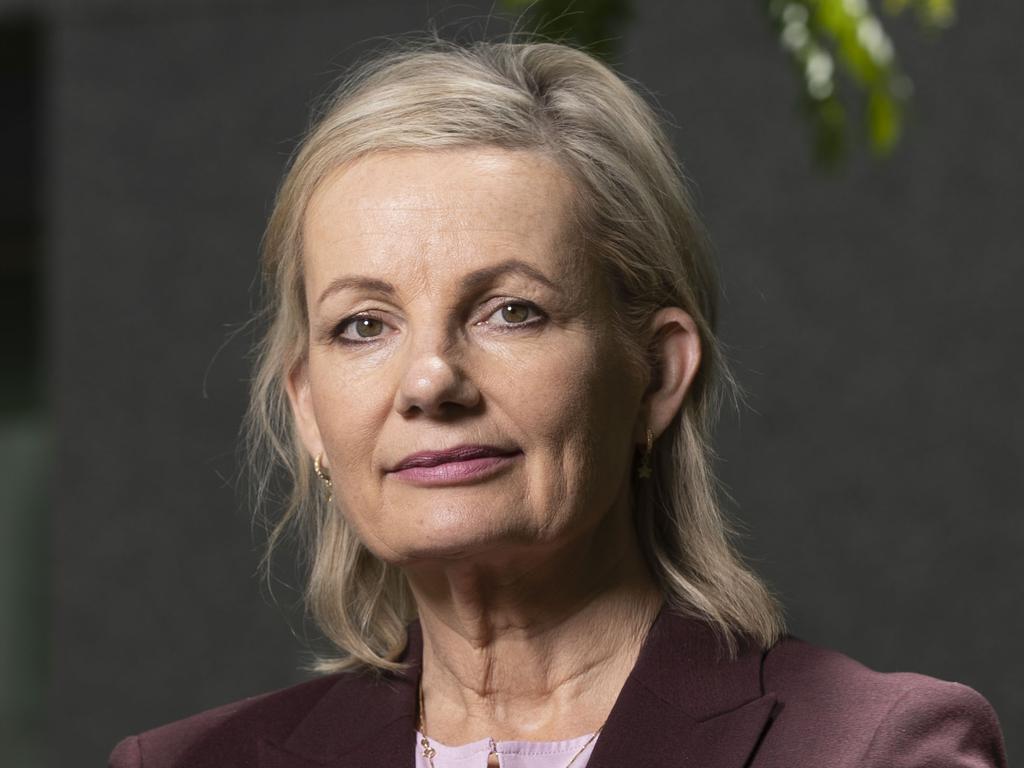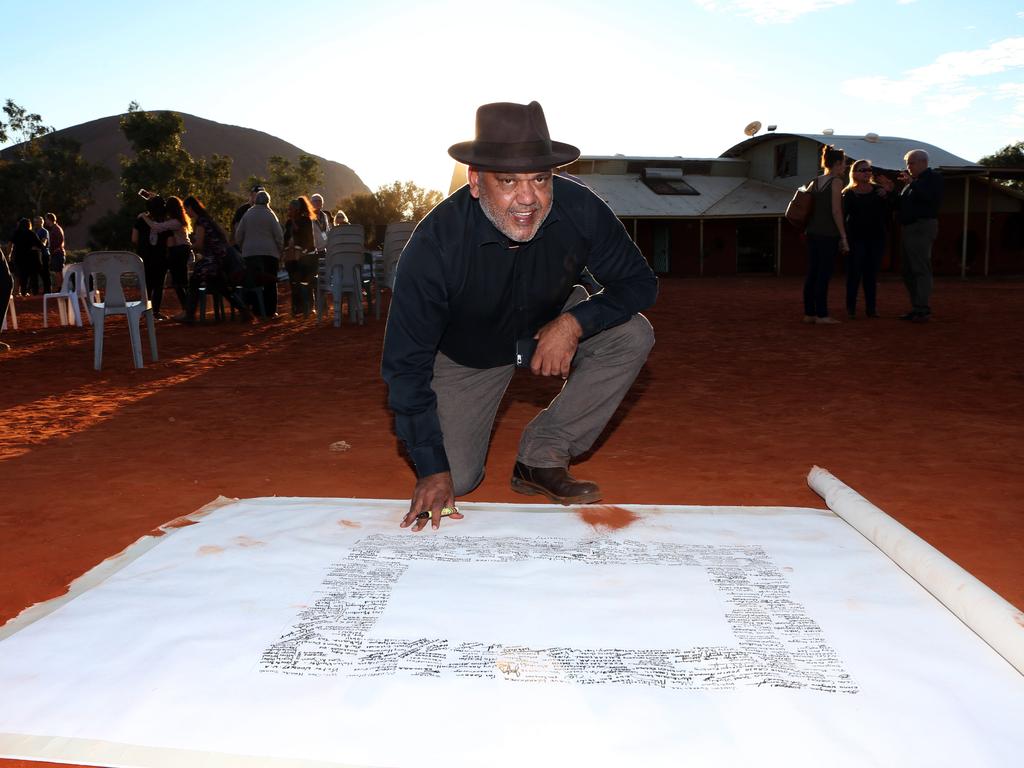Recognise A Better Way's Gary Johns on why the Indigenous voice to parliament is a bad idea

Recognise a Better Way, like most Australians, has a deep sympathy for Aboriginal and Torres Strait Islander people. We understand their desire for recognition and for help for those who are in need. Our concern is that the Prime Minister’s proposals as set out in the Uluru statement make the form of recognition far too political and do not address need.
This paper, on the voice, is the first of three analysing the full Uluru package on which Australians will be asked to vote at the coming referendum.
The argument used by the Prime Minister and supporters of the voice goes like this. “The voice will be embedded in the Constitution in a way that the parliament can determine its design, funding and processes, therefore there is no risk that other Australians will be ignored.” But if the voice is to be designed by parliament, and allegedly is subservient to parliament, why not simply establish it by an act of parliament?
Indigenous Australians Minister Linda Burney said calls for a voice to be legislated ignored “the wishes of the more than 1200 First Nations leaders who took part in nationwide consultations that led to the Uluru statement”. More accurately, the statement was written by a small coterie and presented at Alice Springs to a gathering of 250 delegates sponsored by the commonwealth government’s Referendum Council.

It is not the wishes of a small proportion of the Aboriginal population that counts; it is those of all Australians that counts. In a referendum, it means a majority of votes in a majority of states. Voters may regard the Uluru statement as no more than an ambit claim.
The reason the Prime Minister and his minister do not want a trial of the voice under an act of parliament is that their plan to implement the entirety of the Uluru statement would be strengthened by constitutional change.
They hope to achieve this goal in three steps. First, a blank cheque strategy. They hope to win the referendum by moral bullying – “do the right thing, you are racist if you don’t” and by minimum exposure – “read the Calma-Langton Report, if you want to know how the voice would work”. Second, following a successful Yes vote, the Aboriginal leadership would demand the strongest possible powers. With a powerful voice drowning out opposition, and huge public resources, stage three would follow with the full promise of the Uluru statement – a Makarrata Commission for a “treaty”, and “truth-telling” about Aboriginal history.
The reason for the Prime Minister’s reluctance to explain his model is that it is not a simple plea for recognition, it is a step towards a new distribution of political power in Australia. Its effect is to establish a shadow government, with its own advice apparatus to make demands of government and the parliament not available to any other constituency. The Prime Minister makes frequent reference to the Calma-Langton Indigenous Voice Co-design Process Final Report as the model likely to be implemented following a referendum. The report is an excellent insight into the thinking behind the voice.
It refers not only to the process of giving advice, which already exists throughout the commonwealth government and parliament, but also aims to bind the government and the parliament to “consultation standards” across the entirety of commonwealth public policy for one group, selected by race.
The consultation standards would create political leverage. While the voice would not have a veto over legislation or government policy, it would have a platform on which to trade its ability to delay and grandstand, for votes in the parliament. Politicians would use the voice processes to delay or block government legislation. Senators would trade with the voice to do their bidding.


Such power rewards the powerful, it does not solve problems. It is not voices but different policies that are required to change the lives of the small group of Aboriginal people (perhaps 20 per cent of the Aboriginal population) in need of government assistance. Take, for illustration, two enduring issues in Aboriginal communities – banning alcohol and the Basics Card. Aboriginal people are divided on both issues, for and against banning alcohol, and for and against the Basics Card. More voices saying the same contradictory things does not solve problems.
At a point in time, votes in parliament could be traded by persuading a majority of the voice members to join with a senator or some senators to vote up or vote down a proposition – in return for programs or other legislative changes favourable to one dominant faction of the Aboriginal voice. That is how politics works. It is the context within which the voice model – the Calma-Langton report – must be understood.
The report is a scheme to have 24 national members selected by Aboriginal groups formed at a regional level, assembling in Canberra on a permanent basis. They are not elected. There is no mechanism for a formal ballot in the model. Members selection would be the result of the endless struggle for preferment within Aboriginal organisations. Sitting behind this political melee and embedded in the report are numerous assumptions. Two crucial ones are:
That recognition solves needs: recognition started as an acknowledgment of Aboriginal occupation prior to European settlement. It has been expanded well beyond recognition to a political instrument to advance sectional interests. The voice would make endless claims against every Australian not of Aboriginal descent. There is no evidence that “recognition” would solve the problems of those in need, or “Close the Gap”.
That Aboriginal people are not heard: Aboriginal people have the right to vote and stand for election. There are 11 members of the parliament of Aboriginal descent. They have created representative organisations since the 1920s. The national voices consist of the Peaks of Aboriginal organisations and statutory authorities. There are scores of land councils, Aboriginal corporations, agreements between traditional owners and governments, and committees of Aboriginal people in every state and local government and major corporations. Would the formal voice override these voices?
The national voice’s 24 members would be “collectively determined’ by 35 local and regional voice groups. The key is that members are selected, not elected. There is no formula as to how a combination of individuals and scores of different Aboriginal organisations come together in regions to choose one delegate as a member of the national voice. As complex as that task is, it could have been simplified by holding an election of all Aboriginal people in a region. A probable reason for not holding elections is the issue of identification, which would require an electoral roll of Aboriginal people. Proof of identity is a real issue in Aboriginal politics. Nevertheless, the model recommends a delegate selection process which would be told to “navigate their way” between two principles – “inclusive participation” and “cultural leadership”, which would be different in every region. A more befuddled formula to select members of the voice could not be imagined.
Traditional ways of selection are male-dominated and secretive. They are not conducive to ultra-progressive ways of inclusion – LGBTIQ and gender and so on. They are not even conducive to democratic processes. There are likely to be countless legal challenges to the selection of members because of these rules.
The model provides for two members from each state, the NT, ACT and the Torres Strait. A further five members would represent remote areas. This structure suggests that there is awareness that remote areas have little voice or are at most disadvantage. If that is so, why is there a need for an entire shadow government when the real problems exist for one small part of the Aboriginal electorate? It also highlights the problem – what if the NT member is against alcohol bans and the “remote” member is in favour? Whose voice wins? The national members in all likelihood would be officials of the considerable number of Aboriginal organisations in Australia.
The stranglehold of those in power in Aboriginal organisations would be reinforced and promoted to a national level. Elected members want to get re-elected; to do so, they must reach beyond their organisation to a majority of their constituency. This fundamental truth will be abandoned by the voice method of selection.
The voice would be a new independent commonwealth entity supported by its own Office of the National Voice. There would be a set of consultation standards providing guidance on when, how and on what types of matters the national voice should be consulted by the parliament and government. It would also seek to impose mechanisms on the parliament. The Calma-Langton claim that “the aim would be to support and not disrupt effective legislative and policy processes” is naive. The claim that “the compliance of the Australian parliament and government with these elements could not be challenged in a court” is disingenuous. Just because Calma-Langton say the matters could not be challenged does not stop them from being challenged. It may take years to settle at law and would be under constant fire when the voice did not get its way.
The Calma-Langton model insists there be no disturbance to existing bodies, committees, and processes. Imagine an Aboriginal organisation comes before a Senate hearing. Does a member of the voice step in as the true representative? Voice members may displace other Aboriginal voices. The thousands of arrangements worked up between Aboriginal people and governments and businesses would be subject to a new layer of politics. Any dissatisfied Aboriginal person having lost out in present arrangements would appeal to their national delegate and start the fight all over again. The Prime Minister is trying to impose on Australians a shadow government based on race. His preferred model for the voice says so.
Gary Johns is secretary of Recognise A Better Way (The Voice No Case Committee Incorporated).







In his victory speech in May last year, Anthony Albanese said: “I commit to the Uluru Statement from the Heart in full.” There are three parts to this commitment – voice, treaty, and truth. The Australian electorate must understand that a vote for the Indigenous voice to parliament is a vote for voice, treaty, and truth.